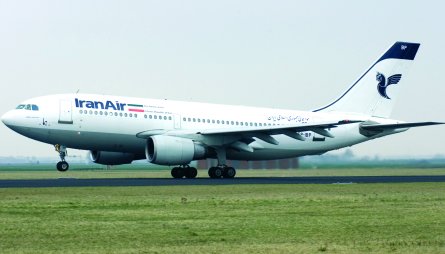By David Kaminski-Morrow in Paris
Iran Air's A310-200s remain grounded because of spares shortages |
As European and US diplomats hold out the possibility of increased support of Western airliners in Iran as part of a proposal to resolve the political stand-off over Tehran’s nuclear programme, the head of Iran Air says that current sanctions have forced the carrier to ground aircraft. Airline chairman and managing director Saeid Hesami also insists, however, that the company is able to maintain safe operations.
Hesami spoke to Flight International while in Paris for last week’s International Air Transport Association annual general meeting, where he said that of 36 aircraft in Iran Air’s fleet, a number, notably its six General Electric CF6-powered Airbus A310-200s, were grounded because of the difficulty in servicing them.
“We’ve grounded these because under no circumstances can we play around with the safety of our passengers,” he said. “We try to maintain the highest level of safety for the aircraft we fly – we obtain what we need from the world market and friends of Iran.”
Hesami is confident that, while the airline’s fleet is ageing, it is able to maintain adequately the aircraft that are flying. The airline’s maintenance department last year secured Part 145 certification from the European Aviation Safety Agency following a two-year project.
“Our air industry in the past has been entirely dependent on the West. Air transport technology has been monopolised by Western countries, including the USA,” says Hesami. “It does create problems, definitely, in our mission to achieve goals – we encounter problems that incur greater costs. And it is the people who are paying for this problem, in the form of higher fares to counter it – this is the injustice of the [sanctions].”
Iran Air has struggled to upgrade its fleet, and a degree of uncertainty surrounds the precise make-up of the operational fleet. Attempts to acquire Airbus A330s were blocked in 2001 – forcing the airline to bring in secondhand A310s instead – and last year it introduced two ex-Olympic Airlines A300-600s. Its fleet also includes Boeing 747-100/200, 747SP and 727 aircraft, as well as a dozen Fokker 100s. Iran Air Tours, its holiday division, operates 12 Tupolev Tu-154s.
Details of the latest diplomatic proposals to limit Iran’s nuclear activities have yet to be formally disclosed, but they are said to include a lifting of restrictions on providing civil aircraft parts.
Source: Flight International
























